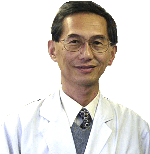


![]()



![]()
1985 - 2004
 Prof. Nishimune |
Our Research The union
of two germ-line cells, the sperm and egg, restores the
genomic information that contains the characteristics of
the species and initiates development of a single zygote
into a multicellular organism. As an individual develops,
cells that have acquired particular fates to perform
specific functions proliferate and differentiate to form
each organ of the body. Once fully grown, somatic cells
ensure individual survival, and a number of germ-line
cells are produced in the reproductive organs to carry
the genome to the next generation. The marvelous ability
of multicellular organisms to preserve the species and
maintain individuals is based on germ and somatic cells,
respectively. |
Notice ! Our laboratory was closed at 31
March 2004. |
![]() New address
New address ![]()
Invited Proffesor Yoshitake Nishimune
Dept. of Molecular Biology
Res. Inst. for Microbial Diseases, Osaka Univ.
3-1 Yamadaoka, Suita, Osaka 565-0871, Japan
TEL +81-6-6879-8338 FAX +81-6-6879-8339
E-mail: nishimun@biken.osaka-u.ac.jp
![]()
[ Home of Res. Inst. for Microbial Diseases ]
Copyright© 2002 [Department
of Science for Laboratory Animal Experimentation]. All rights
reserved.
Revised : 2004/9/6